Have you ever tasted wines from Malta or Gozo? In this guide to the wines of Malta and Gozo, we look at the heroic island viticulture and challenges of this island terroir as well as the benefits and distinctive character of Maltese wines.
Guide to the wines of Malta & Gozo
We circled around again in one big loop, the wing on my side dipping towards the 18th-century Fort Manoel and the crystal blue seas that surround Valletta, while the other wing reached further into the spotless sky, as the pilot spoke through the tannoy. He explained that we needed to remain circling above Malta for another 20 minutes until they had removed some debris from the runway. In 20 minutes, it turns out, you can circle Malta several times. It’s a small island, spanning only 27 km in width and 14 km in length and surrounded by azure seas and normally azure skies. And getting to see it, over and over again, from the air was a fascinating introduction.
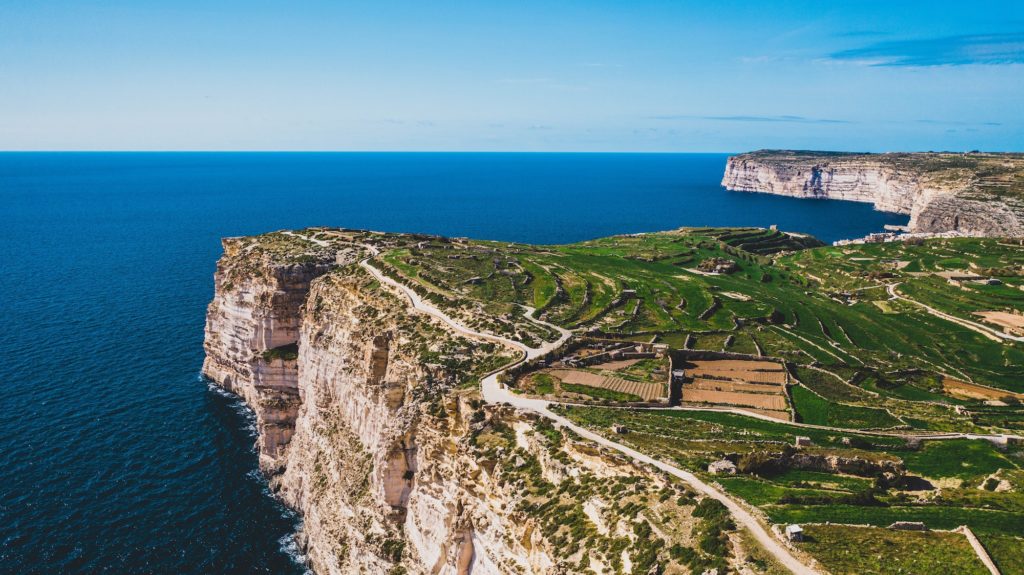
Malta is a remarkable island for many reasons. An ancient block of sedimentary rock which was lifted up over five million years ago, it has long been the stepping stone between the continents of Europe and Africa and inhabited by humans for some 7,000 years.
Malta has been conquered and controlled by most of Europe’s great empires from the Phoenicians in 800 BC to the Carthaginians and later the Romans in 200 BC, and followed by the Byzantine Empire at the turn of this millennia, which was superseded by Arabic rule then the Normans and Sicilians before the Order of Knights took over in the 16th century. The French also conquered the islands, and then the British, until it achieved independence in 1964.
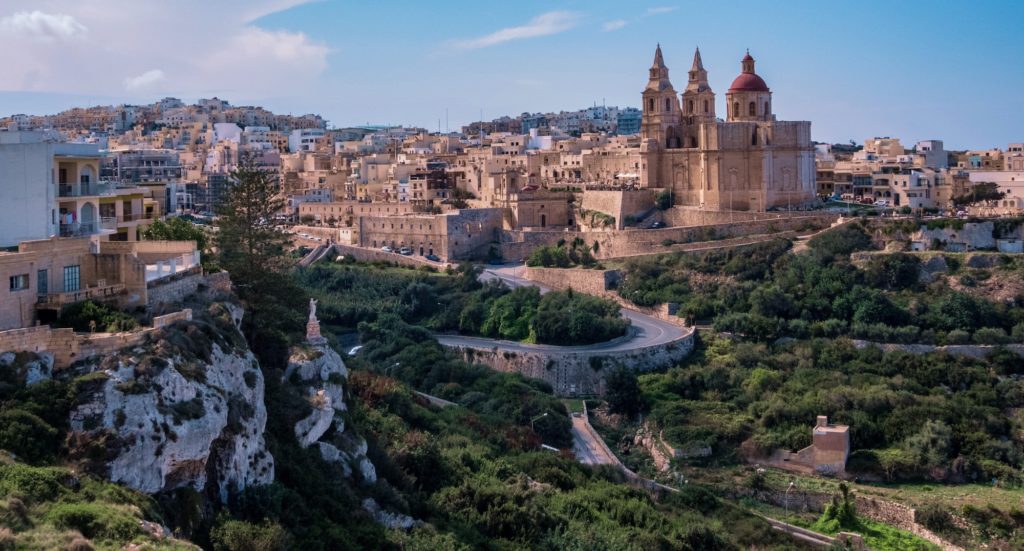
With all these waves of different influences, the island has evolved to become quite a melting pot of different cultural, gastronomical and linguistic influences and its culture, food and people are unique and yet share similarities with other countries and places around the world because of it. Maltese wine is a similar story.
Vines were likely first planted by the Phoenicians around 3,000 years ago and there are relics of grape presses in Gozo that back to 500 BC. But although its wine history is long, wine production only makes up a small fraction of Malta’s agricultural output today with under 450 hectares of vines planted.
On the island of Malta and especially on the second-largest island of the archipelago (and only other inhabited one), Gozo, there are some old vines that are well over 60 years old and vineyard estates that have been handed down through families generation by generation. The old vines that have survived in Malta for so long are two native Vitis vinifera varieties, Girgentina and Gellewza — hardy varieties that have adapted well to the challenging island terrain.
For most of Maltese wine history, the wines made here have been small garage wines — made by families from their own gardens of vines for their own consumption. And maybe shared with a neighbour or two. It was only at the beginning of the 20th century that a couple of these producers became more organised and started a family business — kickstarting the Maltese wine industry.
One of the wineries was Delicata, founded in 1907, and the other was Marsovin, founded in 1919. Both are independent family businesses which have grown steadily in wine production to meet the growing demand for wines in Malta, especially since the tourism boom in the 1970s which continues to this day.
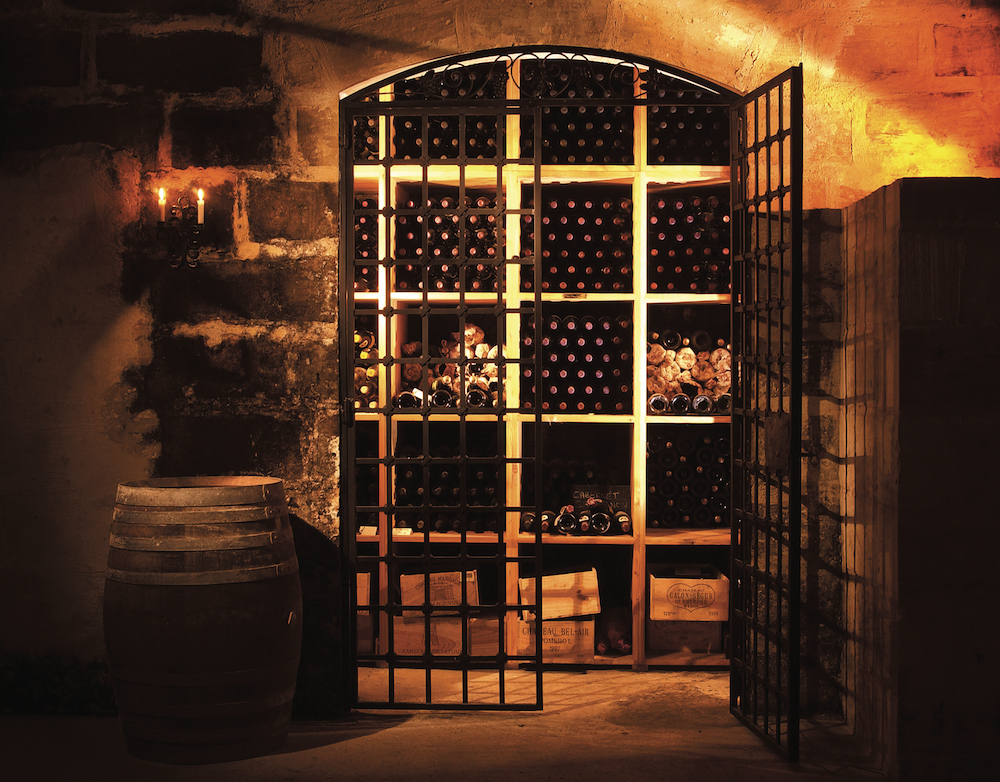
The historic cellars of Marsovin, built by the Knights of St John
“I think the 1950s was a pivotal moment in Maltese wine history because we started making wine in refrigerated tanks, which improved quality enormously,” says Jeremy Cassar, fourth-generation owner and CEO of Marsovin. “Then in 70s, 80s and 90s, the focus has increasingly been on quality wines to suit an ever more discerning customer.” Between them, Marsovin and Delicata make over 90% of Malta’s wines and work with most of the 500 or so growers on both islands.
Another important producer on the island is Meridiana — which is still relatively small in size (with a 140,000 bottle production, accounting for about 5% of Maltese wine) but has the added kudos of being owned by the Antinori family, the renowned dynasty of Tuscan vintners. There are, of course, much smaller family vineyards and wine businesses still on the island, including the boutique wines of Maria Rosa Estate, Tal Massar, Mar Casar, and Ta’Mena.
All of them, both large and small, rely on local wine consumption (from both Maltese customers, expats and tourists) and over 99% of Malta’s wine production is sold within Malta itself. While you are in Malta, almost all of the restaurants will have a few Maltese wines on the menu — making tasting the terroir in situ relatively easy.
The terroir of Malta & Gozo
Back to my experience of Malta from the air. It was a fantastic introduction because you can truly see the lay of the land: an island covered in small hills that look like anthills from the sky and a complex patchwork of ancient fortified cities, old farming terraces and modern urban development. The island only stretches 14 km at its widest point, meaning you are never more than 7 km from the sea and usually much much closer.

The Ramla estate of Marsovin, just a mile from the sea in Gozo
This all means that the vineyards of Malta and Gozo are rather united in their terroir: all significantly impacted by the sea, sharing the same typically sunny Mediterranean climate, and in close proximity of each other, surrounded by towns and mainly planted on terraces. The big differentiators between sites is that the aspect of the vineyard varies, and the soils can actually vary quite a lot.
Although all sedimentary soils, vineyards are planted on a wide range of sites from clay and terra rossa to limestone and sands. The best for viticulture are the poorer, well-draining soils which drain the rain quickly and allow vines and their grapes to dry quickly from the relatively high sea humidity.
“Malta is a heroic viticulture,” says Italian winemaker and consultant at Maria Rosa Wine Estate, Ennio Gugliotta. “In the summer the conditions are very hard, the temperature can rise to 35C and you can get quite a lot of humidity at night and in the morning. You have to harvest the grapes really early to maintain the right temperature, so we start harvesting at 5am and have the be finished by 10am. Also, it is hard to get fresh water for the plant here, so there are some challenges in managing vineyards.”
But for those that do persist, Malta offers quite a unique style of wines. The bounteous sunshine ensures grapes ripen fully and well, while the moderating impact of the sea means that even the hottest days are typically cooler than the heat waves and spikes found in the continental regions of southern Europe. These slightly more moderate temperatures mean there aren’t any overly alcoholic wines (instead most Maltese wines are a modest 12.5%). The wines have a vibrancy of fruit expression but are not extrovert nor jammy by any means. And they all take on this saline, tangy character from their seaside location — a key part of their identity as island wines.
Producing a range of red, white and rosé wines, no matter what variety is used of all the wines I tasted there was a great approachability to them — each with bright fruit, balanced alcohol and tangy acidity with a saline finish and soft tannins in the red wines. They are ultimately foodie wines, which suits this popular holiday spot well.
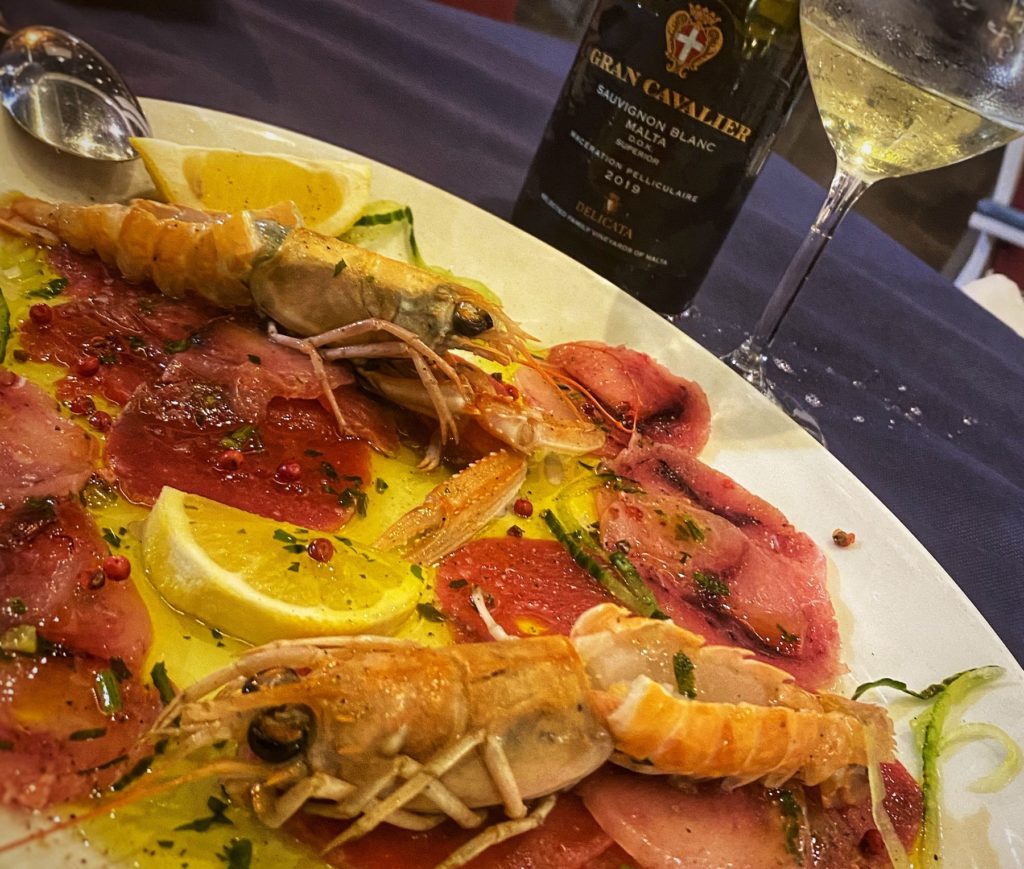
In the 1990s, during the boom in quality wine production and following Malta’s tourism boom, producers started introducing international varieties on the islands of Malta and Gozo. “Malta’s fine wine tradition really only started around 30 years ago after the tourism boom of the 1980s,” explains Maltese wine writer and author of Wines of Malta, Georges Meekers. “The influx of tourists suddenly meant that they were demanding international wine varieties, rather than wanting the native Maltese grape varieties, and so Delicata and Marsovin began planting international varieties for this growing market.”
There’s been a fair amount of experimentation, and it still continues today, but most wineries are hedging their bets on Merlot and Chardonnay as the major international grape varieties here. And they can have enjoyable results, but I’m a bit more convinced by Vermentino, Sauvignon Blanc and Cabernet Franc. But most of all, I’m convinced by the native varieties of Girgentina and Gellewza. There are probably only 100 or so hectares of Girgentina left and less than 50 of Gellewza but both make some really enjoyable wines. Gellewza is a refreshing red grape variety which has high acidity, quite light and fine tannins and distinctive cherry and liquorice aromas. It makes a convincing red wine but also a nice sparkling rosé.
Girgentina also has reasonably high acidity but is quite lean in style without much weight or body in the palate, although it has a long, linear and mouth-watering finish. It isn’t the most aromatic of varieties, but I think that suits its tangy, saline finish well. This tangy salinity, in both white and red wines, international and native varieties, is clearly part of the island terroir and an appetising character to have — suiting the seaside climate and gastronomy well.
And most of Malta’s wines are sold and served in Malta at restaurants, which means the wines have to compete with a host of international wines that are imported in both shops and restaurants. In order to compete, producers keep their prices down although this is no mean feat on such a small island where imports are costly. Interestingly enough, both Marsovin and Delicate offer a bottle return service — giving clients (individuals and restaurants/bars/shops) money back for returning the wine bottles, just as they have ever since they started bottling wine several decades ago. “We use the bottles up to 12 times,” says Marsovin CEO and fourth-generation of the family, Jeremy Cassar. “It’s an eco-friendly way to recycle and that’s really important here on an island.”
Unfortunately, it seems though that few customers take the wineries up on their offer, and those returning their bottles are less and less each time. That’s a great shame when it makes such a big impact.
Maltese wines: boutique by nature
What makes Maltese wines particularly engaging is just how small the production is. Even between the biggest wineries, the largest-scale production is only 60,000 bottles and most lines are barely 3,000 bottles. With the smaller vignerons of Malta and Gozo, you can expect wines to often only be made by the one barrel!
Vineyards are usually not even a hectare in size, and the largest vineyard on the whole island is 17 hectares. And even that is split into several plots. This all means that you are getting rather handmade and boutique wines in scale. Which is always a very good thing for the wine consumer, even if it is a logistical nightmare for the producer.
“We work with 200 growers… if you can imagine all these grapes coming in at harvest, it’s quite a challenge!” says Matthew Delicata, winemaker and the fourth generation at Delicata winery. “But it does mean we get to make some very small-scale wines, which is definitely more interesting.”
Making wine in Malta is most certainly complex. But that’s what makes its wines interesting, and indeed the place. From its salt pans to its caves and its knight’s fortresses to its megalithic temples, the Maltese islands are incredible to discover. Even from above, with a bird’s eye view, you can see how complex and multi-faceted this island terroir is. And once you get into the wines on ground level, there are even more layers and experiences to discover.

Fast Facts on Malta wine terroir: The geeky stuff
- Climate: Mediterranean, maritime
- Average daytime temperature in summer: 30°C
- Average night-time temperature in summer: 22°C
- Average annual rainfall: 550 mm (mainly in winter)
- Soil types in Malta & Gozo: All sedimentary ranging between clay, sand and loam with limestone under the top soil. The top soil is rarely more than a metre deep.
- Viticulture in Malta & Gozo: Irrigation is typical (drip). VSP is common in modern international varieties while the native varieties are typically older, bush vines. New vineyards are planted north-facing for cooler exposures. Most vineyards are built onto terraces in valleys. Birds can be troublesome, eating the grapes before harvest time.
- Hazards: The high pH means chlorosis can be an issue so resistant rootstocks are commonly used to mitigate the effects. High humidity needs to be carefully managed in vineyards with open canopies and sulphur and a copper spray to reduce the risk of developing powdery mildew and rot. There is a high salt content on the grapes and in the vineyards, and water salinity is an issue when looking for freshwater for irrigation.
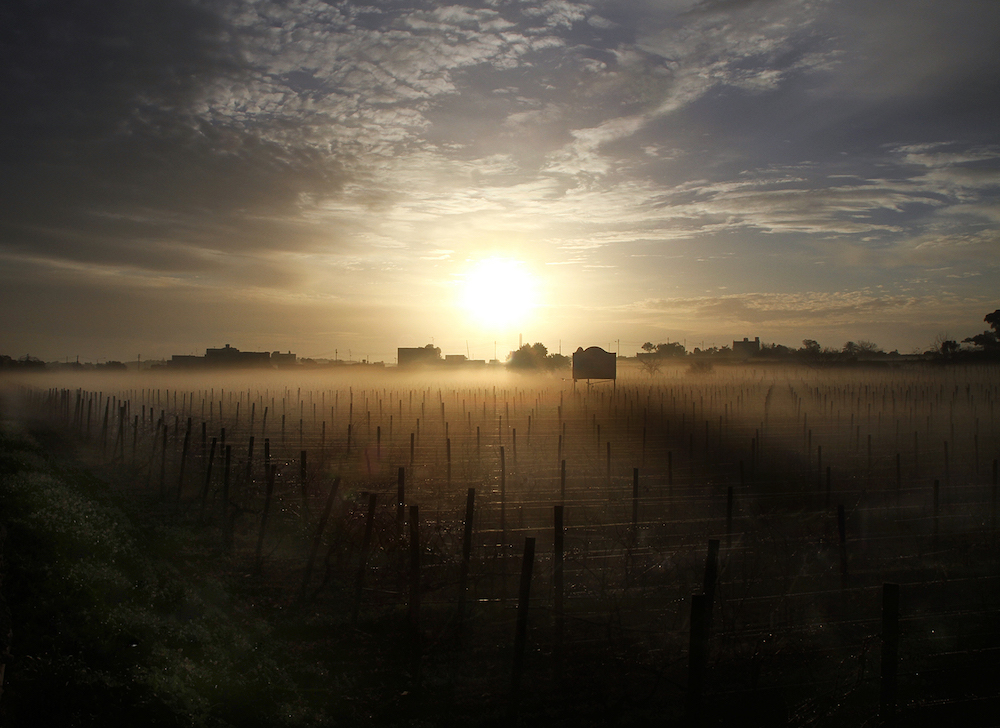
Marsovin Marnisi Estate
Malta wine appellations & wine regions of Gozo and Malta
Gozo is typically a little cooler than Malta and the grape harvest is two weeks later. The soils in Gozo are also more typically clay which are cooler soils and can also slow down ripening times, and reduce the overall pH of wines giving them a better ageing ability.
D.O.K. Malta or D.O.K. Gozo
The DOK (Denomination of Origin) of both islands is only for wines that are entirely made from grapes from either island, and includes regulations on yields and wine quality. The wines are approved by a tasting panel in Italy.
I.G.T. Maltese Islands
This appellation category is for wines which are made from grapes that can come from either island or from a mixture of both islands, and has less stringent yield and wine style regulations than DOK. These wines are not approved by a tasting panel.
Wine of Malta or Produce of Malta
This is the table wine category which also has to be made from grapes grown on Malta or Gozo, however, there are no restrictions on style or yield.
Recommended wines from Malta & Gozo
Astarte Vermentino 2019, Meridiana
This really refreshing Vermentino has attractive notes of green apple and lemon balm with fine herbs and a bright, aromatic mouthfeel with lively acidity. A perfect wine for the seafood of Malta. €15
Gran Cavalier Sauvignon Blanc 2019, Delicata
There isn’t much Sauvignon Blanc on Malta but this wine from Delicata is very distinctive in style and perhaps suggests there should be more! Herbal and zesty although quite delicate, with great freshness, texture and length. This is ideal with a plate of raw fish or oysters! €11
Blanc de Cheval 2019, Marsovin
This flinty Chardonnay comes from Marsovin’s stunning vineyard a bare kilometre from the beautiful beach of Ramla. Made without any oak or malolactic fermentation, it is a taut and linear wine with appealing struck match and zesty aromas. €14
Sirakuzan White 2019, Maria Rosa Estate
There are apparently a handful of white wines made from Nero d’Avola in Sicily, but this is the first I’ve ever tried and I liked it! Notes of citrus peel, cranberries and rosehip, it’s an aromatic and attractive white wine with grippy acidity and a bone dry finish. A fun wine for a wine dinner party. €8
101 Brut Rosé, Marsovin
Marsovin were the first to make a traditional method sparkling wine in Malta and now they’ve taken another leap and made the island’s first sparkling rosé — using Gellewza as the main grape. Delightfully floral and fruity on the nose with refreshing acidity, great balance on the finish and some complexity from 15 months on the lees, this is a charming sparkling rosé and ideal for sipping on a Maltese balcony at sunset! €15
Fenici Rosé 2019, Meridiana
Rosé seems like a no brainer for an island like Malta. What else would you want to be drinking while surrounded by azure seas and sunny skies? This Cabernet Sauvignon (75%) and Syrah blend is a delicate and juicy wine with a slightly tangy but refreshing finish. Meridiana’s Fenici line offers excellent value. €11
Medina Gellewza 2019, Delicata
Delicata’s Medina line offers superb value across the board — including a juicy red blend of Syrah, Carignan and Mourvèdre and a lean blend of Chardonnay and Girgentina. I’m a fan of the fresh, unoaked Gellewza which has bright notes of black cherries with added complexity of liquorice, almond and sanguine notes. It’s got that trademark tangy salinity and grippy freshness. €6
Sirakuzan 2016, Maria Rosa Wine Estate
Nero d’Avola might seem like the natural choice for an island so close to Sicily but Joseph Fenech was surprisingly the first person to plant it here. The wine is a challenge to make in the vineyard, with the higher humidity in Malta, but with Sicilian winemaker, Ennio Gugliotta, on board this is a triumph: bright notes of red fruit, flowers and mouth-watering acidity. It will age well for decades! €8
1919 Gellewza, Marsovin
Each year Jeremy Cassar commissions a local Maltese artist to design the label for this innovative line, and these labels really shine because of it. The wine too is an artful creation, a blend by the winemaker (there is a rosé and white too). In this case, Gellewza is fleshed out with 10% Merlot and the result is a juicy, refreshing red wine with a crunchy finish and cherry and cacao notes — a very versatile food wine. €10
Grand Vin Hauteville Cabernet Sauvignon 2017, Delicata
This is an incredibly inky wine which is concentrated through the process of saignée and results in a rich wine with intense notes of black forest fruit, graphite and spice. It’s still incredibly youthful and lively for its age, and surprisingly cool climate in style. A revelation. €15
Nexus 2017, Meridiana
This rich Merlot is one of the top wines of Meridiana and the fruit concentration sings through with ripe berry notes as well as a dark, smokey note and some complex aromas of dried leaves and spice. This is a layered, earthy wine which has the trademark tangy finish of Malta. €18
Primus 2018, Marsovin
This Amarone-style wine is made with Gellewza and Syrah grapes that are sun-dried for three weeks. The result is a rich, dense and concentrated wine with intense ripe, dried black cherry notes and layers of chocolate and exotic spices with a long finish and full-body. It’s the most voluptuous wine I tasted in Malta, and ideal with not only chocolate but also hearty steak and lamb dishes. €33
A quick guide to Gellewza and Girgentina: Malta’s native grape varieties
Maltese wine writer Georges Meekers shares an insight into Malta’s two native, and unique, grape varieties: Girgentina and Gellewza:
Guide to Malta wineries
Meridiana Wine Estate

Started in the mid-1980s as the dream of a Maltese family to make good wine, after a few years of experimentation with small plots of experimental vines it was enough to attract the Antinori family of Italy to come on board in 1992. Today the Antinori family, in fact, own the whole estate and it has grown to 17.5 hectares in total, making 140,000 bottles a year and working with a dozen growers nearby.
The concept of Meridiana is very much a premium and estate wine production, and the original estate was key to its foundation. “When the company was originally looking for an estate, we pinpointed a few areas, and we were always keen on this area which is Malta’s agricultural heartland,” says Karl Chetcuti, Meridiana Estate Manager. “This property was a good size and it looked good for what we wanted to do — it’s totally flat, which is an advantage to work, there was no shade, then there was a big plus of the water drainage system. This is an old military airfield and the British had built this herringbone drainage system, which was really good for red varieties.”

Aerial photo of the Meridiana estate, the largest single-vineyard estate in Malta, on a former airfield
Although originally the focus of Meridiana was on mainly red varieties (Cabernet Sauvignon, Merlot and Syrah), today white wines are coming more into focus and the estate is planting more Chardonnay as well as sourcing a very nice Vermentino. The winery is designed to look like a traditional Maltese farmhouse, but once you step inside they have high-tech temperature-controlled fermentation tanks and a small but organised cellar. You can visit the winery for tastings (Mon – Fri, on appointment) and explore the excellent range of wines.
Open for visits
meridiana.com.mt
Delicata

The oldest winery in Malta, and still one of the most important, Delicata was founded in 1907 and now has the fourth-generation in charge. Even though Delicata makes a major proportion of Malta’s wines, they have a very specific business model of not owning vineyards but instead working on long-term contracts with growers.
‘Vines for Wines’ is the name of the grower-support scheme in which they encouraged local growers to plant and cultivate international varieties for them in the important conversion period in the 1990s. Today between the 200-odd growers they work with, they have access to 20 different grape varieties which all go towards their different lines of white, red and rosé wines. As well as a focus on international varieties, Delicata has long been an advocate of the two native Maltese grape varieties — Gellewza and Girgentina — which make some great wines in their large portfolio too.
The winemaker today is fourth-generation vigneron Matthew Delicata, who is one of the most promising winemakers on the island with a good knowledge of Maltese wines and studying to become Malta’s first Master of Wine. Here he gives us an overview of the terroir of Malta:
Not open for visits
delicata.com
Marsovin

One of the biggest and most important wineries in Malta, Marsovin started out in 1919 with rather humble roots. “My great grandfather literally started selling peanuts on the side of the road at 10 years old,” explains Jeremy Cassar, the fourth generation owner of the winery. “He then started selling other things too like olives and salamis, but after the war, it was harder to sell food and so he started selling and making wine which turned out to be the better business at the time. It has steadily grown since then, and my father and I started focusing on higher quality wine production.” Jeremy explains the history of his family, and Maltese wine, in this video interview:
Today Marsovin has a wide range of wines from everyday labels to the most sought-after premium labels on the island. The top wine is Grand Maître which is in ode to the Knights of St John, who built the historic building and cellar in which the winery is located today. It’s a beautiful cellar to visit, filled with resting barrels and bottles of their traditional method sparkling wine. The winery, like Delicata, is located by the waterfront in the suburbs of Valletta — the historic quarters for wine production and an ideal location for shipping out their wines to bars and restaurants which they do on a daily basis.
The vineyards, however, are dotted all over the island and Marsovin has a mixture of their own vines (some of which are managed organically) and works with 250 small growers. One of their most notable vineyards is the new plantation of mainly Chardonnay on the island of Gozo right next to the stunning Ramla beach. Another notable vineyard is their Cheval Franc vineyard where their most prized Cabernet Franc comes from. Another exciting innovation at Marsovin is their recent plantings of Malbec — watch this space!
Open for visits
marsovin.com
Maria Rosa Wine Estate
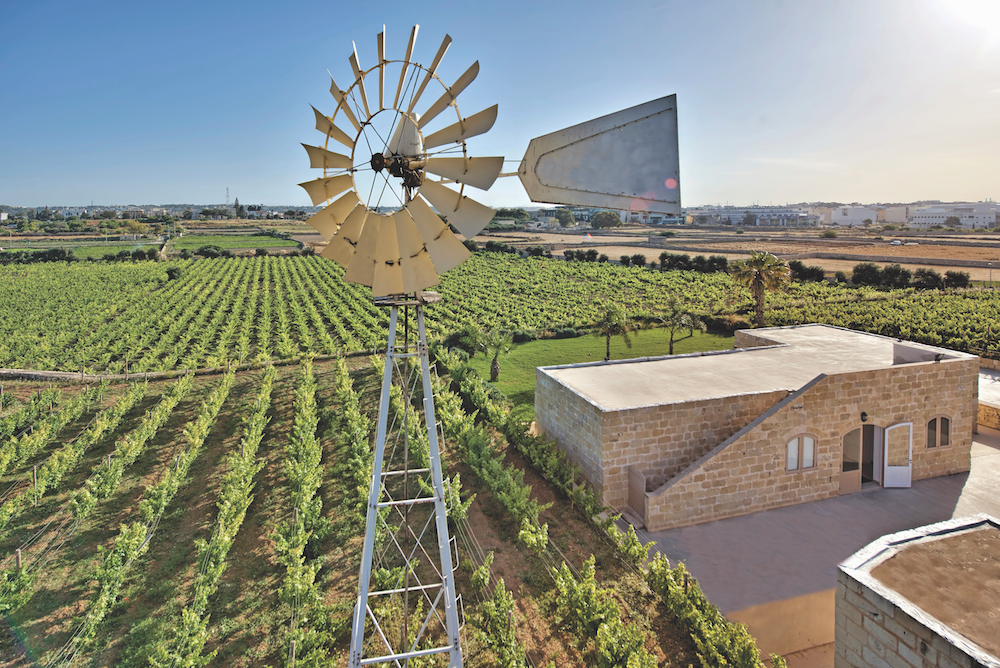
This small family wine estate was founded by Joseph Fenech in 2006, who chased a dream to produce his favourite Sicilian wine, Nero d’Avola, in his home terroir of Malta. Planting four hectares of vines in central Malta, the vineyard not only has Sirakuzan (the local name for Nero d’Avola) but also Cabernet Sauvignon and Syrah.
Having just listed three red grapes you might think Maria Rosa Wine Estate only produces red wines, but think again. They also make a floral and fruity rosè and a refreshing white wine, a blanc de noir, from their Sirakuzan grapes.
Today the estate is run by Joseph’s children, following his passing earlier this year, and it is a picturesque spot in the middle of Malta surrounded by olive trees (which they also make a delicious olive oil from) and increasingly green as the vineyard works towards organic certification, as winemaker Ennio Gugliotta explains:
Open for visits
Facebook/MariaRosaWineEstate

